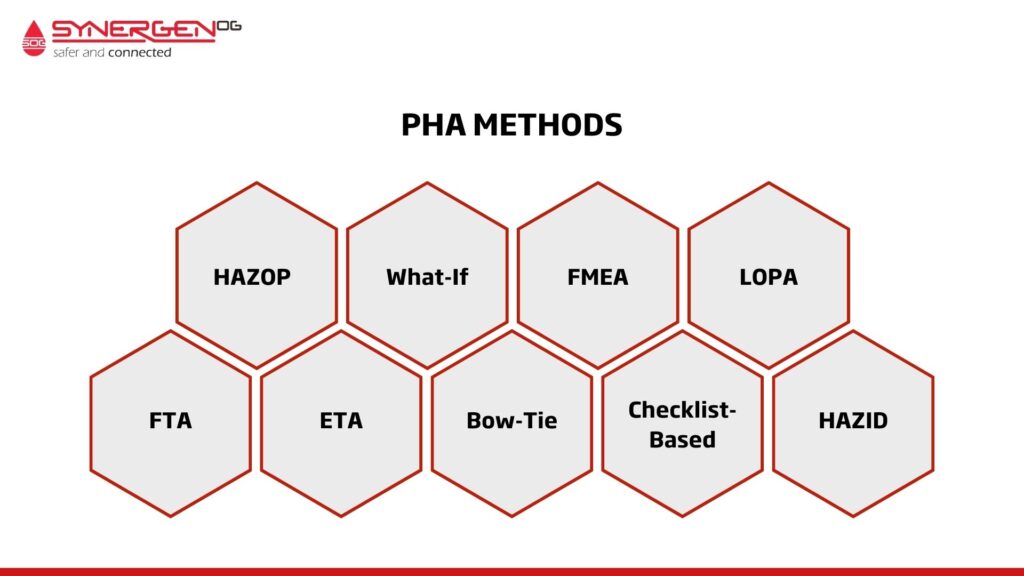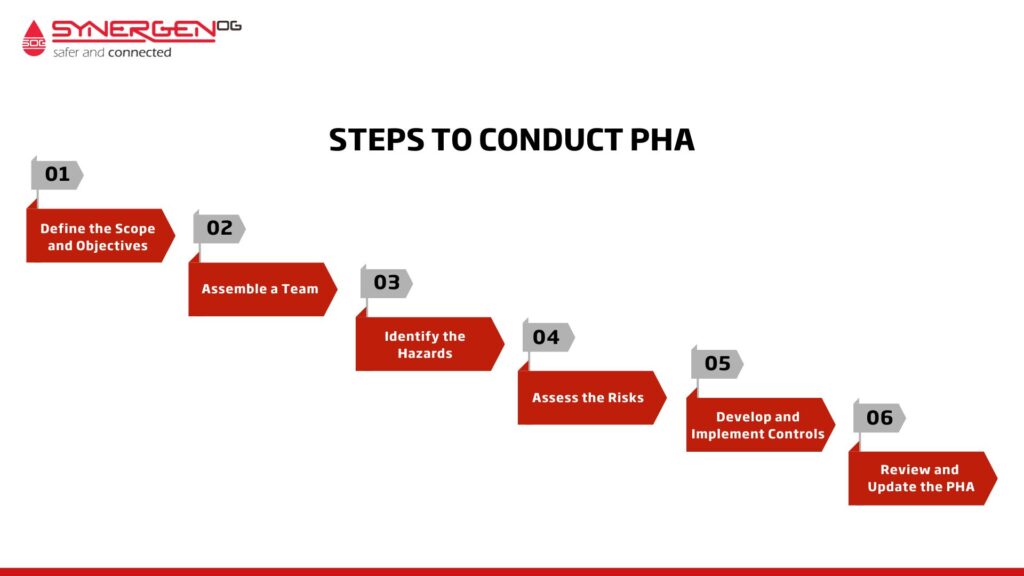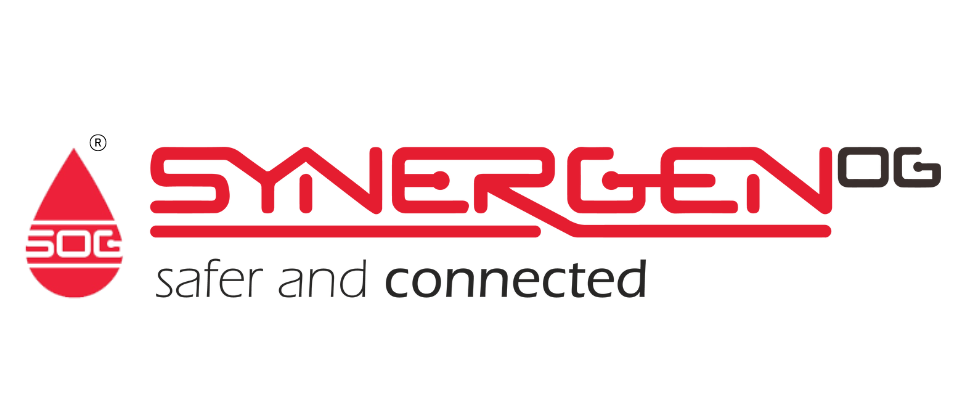| Summary – The article outlines key steps in conducting a PHA, such as defining scope, assembling a team, identifying hazards, assessing risks, developing controls, and reviewing the analysis along with various PHA methods are discussed, including HAZOP, What-If Analysis, FMEA, LOPA, FTA, ETA, Bow Tie Analysis, Checklist-Based Hazard Analysis, and HAZID. Overall, the article serves as a guide for organizations seeking to ensure safety in their processes through thorough PHA practices. |
In any industry, there are always potential hazards that can cause harm to employees, damage equipment, and even lead to catastrophic events. To mitigate these risks, companies need to conduct a thorough process hazard analysis (PHA) to identify and assess potential hazards in their operations.
As per OSHA standards, PHA is required for any industrial process that makes use of hazardous chemicals. This article will provide an overview of process hazard analysis methodologies, their importance in risk management, and the steps involved in conducting a successful PHA.
What is Process Hazard Analysis (PHA)?
Process Hazard Analysis (PHA) is a systematic and comprehensive evaluation of the potential hazards and risks associated with an industrial process. The goal of a PHA is to identify and assess the potential hazards, determine the likelihood and severity of an incident, and implement measures to control and mitigate the risks.
The PHA process involves a thorough review of the process, its operating conditions, and potential hazards. It typically involves a team of experts who review the process and assess the risks from various perspectives, including equipment failures, human error, and external factors.
As such, it identifies scenarios that could lead to fires, explosions, chemical spills, and the release of toxic fumes or chemicals.
Importance of Process Hazard Analysis
Process hazard analysis is a critical component of risk management in any industry. A successful PHA can help to:
- Identify potential hazards and risks associated with an industrial process
- Determine the likelihood and severity of an incident
- Develop effective controls and mitigation measures to reduce the risks
- Ensure compliance with regulatory requirements
- Enhance the safety and reliability of the process
Different Types of PHA Methods

There are several methods for conducting a process hazard analysis, each with its own strengths and weaknesses. The most commonly used process hazard analysis methods are:
1) Hazard and Operability Study (HAZOP)
HAZOP is a structured and systematic approach to identifying potential hazards in a process. It involves a team of experts who systematically examine each element of the process and identify potential deviations from the intended operation.
2) What-If Analysis
What-If Analysis is a qualitative method that involves posing hypothetical scenarios and examining the consequences of each scenario. It is a simple and effective method for identifying potential hazards and evaluating the effectiveness of existing controls.
3) Failure Modes and Effects Analysis (FMEA)
FMEA is a quantitative method that involves evaluating each component of a system or process to identify potential failure modes and their effects. The review starts with a diagram of the operation, including every component that may fail and affect the safety of the operations.
4) Layer of Protection Analysis (LOPA)
LOPA is a risk assessment technique that evaluates the effectiveness of multiple layers of protection to prevent or mitigate a potential hazard. It involves identifying potential hazards, determining the likelihood and consequences of each hazard, and evaluating the effectiveness of existing safeguards and mitigation measures.
5) Fault Tree Analysis (FTA)
FTA is a top-down approach used to identify potential system failures and their causes. It involves the development of a logical diagram that depicts the relationship between the initiating event, the system components, and the potential failure modes.
For example, if one part of a machine breaks down, FTA can be used to see how that breakdown affects other parts and whether they will still work properly or not; is a structured approach to analyzing the cause-and-effect relationships between events that lead to undesired outcomes.
6) Event Tree Analysis (ETA)
ETA is a bottom-up approach used to evaluate the potential consequences of an event. Here the development of a logical diagram depicts the possible outcomes of an event and their associated probabilities.
7) Bow Tie Analysis
Bow Tie Analysis is a visual approach that identifies potential hazards, their causes, and the consequences of each hazard. In this approach, the engineers will develop a diagram that looks like a bow tie, with potential causes of hazards on one side and potential consequences on the other.
8) Checklist-Based Hazard Analysis
This is a systematic approach that uses checklists to identify potential hazards and their associated risks. The checklist covers major categories of hazards and risks relevant to the process.
9) Hazard Identification (HAZID)
Hazard Identification (HAZID) is a qualitative technique that identifies potential hazards and assesses their likelihood and consequences. This method identifies all potential hazards associated with a process and the assessment of the likelihood and consequences of each hazard.
Steps in Conducting a Process Hazard Analysis

The process of conducting a PHA involves several steps,
1. Define the Scope and Objectives
The first step in conducting a PHA is to define the scope and objectives of the analysis. This includes identifying the process to be analyzed, the team members involved in the analysis, and the specific objectives of the analysis.
2. Assemble a Team
The next step is to assemble a team of process safety experts who will conduct the analysis. The team should include individuals with expertise in the process being analyzed, as well as experts in risk management and PHA methodologies.
3. Identify the Hazards
The team then identifies all potential hazards associated with the process being analyzed. This includes equipment failures, human error, external factors, and other potential sources of risk.
4. Assess the Risks
Once the hazards have been identified, the team assesses the risks associated with each hazard. This involves determining the likelihood and consequences of each hazard and evaluating the effectiveness of existing controls and mitigation measures.
5. Develop and Implement Controls
Based on the results of the risk assessment, the team develops and implements controls to mitigate the risks associated with each hazard. This may include engineering controls, administrative controls, or personal protective equipment.
6. Review and Update the PHA
Finally, the team reviews and updates the PHA on a regular basis to ensure that it remains up-to-date and effective in managing the risks associated with the process.
Conclusion
Process hazard analysis is a must-have for identifying and addressing potential hazards in processes. By conducting a thorough and systematic PHA, companies can protect their employees, the environment, and their operations from potential harm and damage.
With the various PHA methodologies available, companies can choose the most appropriate method for their needs and ensure the safety and reliability of their processes.


[…] Hazard Analysis:Process hazard analysis (PHA) identifies and evaluates potential hazards associated with the process. Various methods, such […]
[…] in chasing industrial safety, providing a structured approach to identifying and mitigating process hazard analysis. This paper delves into case studies that showcase applications of HAZOP workshops in various […]
[…] Conduct a Process Hazard Analysis (PHA) – This detailed evaluation helps in identifying and evaluating industrial process hazards. […]
[…] methods are employed in PHA, including HAZOP, What-If Analysis, FMEA, LOPA, FTA, ETA, Bow Tie Analysis, and Checklist-Based […]
[…] by comparing HAZOPs and PHAs, enlightening those looking to understand these important tools. Understanding PHA (Process Hazard Analysis) is a systematic effort to identify and analyse potential hazards associated with industrial […]
[…] PHA, or Process Hazard Analysis, is a broader term encompassing various methodologies used to identify and analyze the significance of potential hazards associated with industrial processes. Common PHA techniques include HAZOP, What-If Analysis, Failure Mode and Effects Analysis (FMEA), and Fault Tree Analysis (FTA). […]
[…] theoretical knowledge and gain practical expertise with process hazard analysis tools. Mastering process hazard analysis methods like HAZOP, HAZID, LOPA (Layer of Protection Analysis), and Bow-Tie Analysis is essential for […]
[…] (developed by Sphera) is among the most widely used software tools for conducting structured Process Hazard Analysis (PHA) and HAZOP studies. Designed specifically for safety engineers, it helps systematically identify, […]
[…] Proactive Risk Control: By identifying potential failure modes early, organizations can implement safeguards before catastrophic incidents.fauske.comsynergenog.com […]